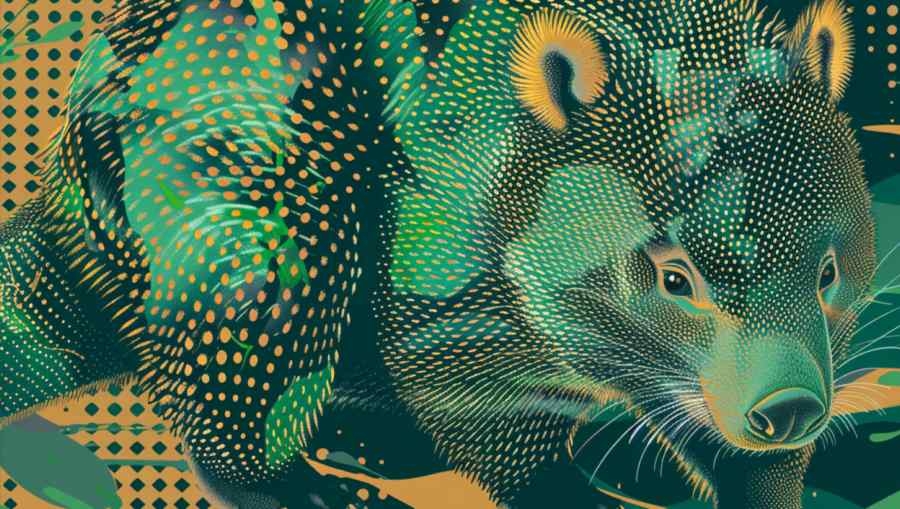Discovering Maria Island: Tasmania's Hidden Wildlife Haven

A Brief Introduction to Maria IslandMaria Island is a hidden haven for wildlife enthusiasts, history buffs, and adventure-seekers alike. Located off the east coast of Tasmania, Australia, this small yet captivating island is often overlooked in favor of its more famous neighbor, Hobart. But for those willing to venture off the beaten path, Maria Island offers a treasure trove of unique experiences, from face-to-face encounters with friendly wombats to exploring the remnants of a convict settlement. So grab your hiking boots and set sail for a journey into Tasmania's enchanting past and present.
A Storied HistoryMaria Island's history is as fascinating as the wildlife that inhabits it. The island takes its name from the wife of the then Lieutenant Governor of Van Diemen's Land, Maria Van Diemen, who probably never set foot on this chunk of land. The island was first used as a penal settlement from 1825 to 1832, and later between 1842 and 1850. Many of the original buildings still stand, including the convict penitentiary, offering a glimpse into the lives of those who were less than thrilled to call Maria Island home.
Following the closure of the penal settlement, the island became a hub for various industries, including whaling, sealing, and farming. Italian entrepreneur Diego Bernacchi even attempted to establish a vineyard and cement manufacturing, which, incidentally, did not end well for him. The island changed hands several times before finally being declared a national park in 1972, protecting the rich history and wildlife for future generations.
Flora, Fauna, and Furry FriendsNow, let's talk about the real stars of Maria Island: the animals. The island is home to numerous species of birds, marsupials, and reptiles, many of which are rare or endangered. Birdwatchers will delight in spotting forty-spotted pardalotes, while reptile enthusiasts can search for the elusive blue-tongued skink. But the true highlight of Maria Island's wildlife is undoubtedly the wombats. These plump, furry marsupials are known to be quite approachable, often allowing visitors to admire them from a close range. But please, resist the urge to pet them. They may look cuddly, but they're not domesticated creatures.
In addition to the island's native wildlife, Maria Island is also home to a unique population of semi-wild Tasmanian devils. These feisty creatures were introduced to the island as part of a conservation effort to combat the spread of a contagious facial tumor disease devastating the mainland population. While sightings of these nocturnal animals can be rare, their unmistakable screeches can often be heard echoing through the night.
Exploring the IslandNow that you're pumped to explore Maria Island, let's talk logistics. The island is accessible by a 30-minute ferry ride from the small town of Triabunna, which is a roughly 1.5-hour drive from Hobart. Be prepared to pack all necessary provisions, as there are no shops or cafes on the island. But fear not, this only adds to the island's charm and sense of adventure.
Once you've arrived, the island is best explored on foot. There are numerous walking trails to suit all fitness levels, from leisurely strolls along the shoreline to challenging hikes up the scenic Bishop and Clerk mountain. As you meander through the island's diverse landscapes, be sure to keep an eye out for remnants of its past life, including the eerie remains of Bernacchi's cement works and the picturesque ruins of the Darlington Probation Station.
Immerse Yourself in the Past and PresentOne of the most unique aspects of Maria Island is the opportunity to immerse yourself in both its natural and historical wonders. Spend your days marveling at the stunning Painted Cliffs, a series of sandstone formations boasting a spectacular array of colors and patterns. Or step back in time with a visit to the Fossil Cliffs, where you can spot ancient fossils embedded in the rock.
For an even deeper dive into history, consider staying overnight in one of the island's restored heritage buildings. The Penitentiary, once home to the island's convicts, now offers basic accommodations for visitors seeking a truly authentic experience. As you drift off to sleep, you can't help but imagine the stories that unfolded within these very walls.
Whatever your interests may be, Maria Island is a treasure waiting to be discovered. So why not venture beyond the typical tourist traps and experience the unique allure of this hidden wildlife haven?
|
|







